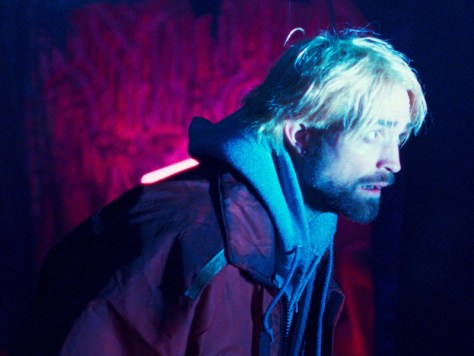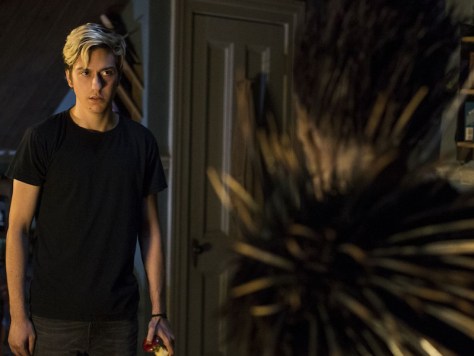
The entertaining but cursory new sports biopic Battle of the Sexes from Little Miss Sunshine directors Jonathan Dayton and Valerie Faris covers the events that led to the what could be considered the most infamous US tennis match of all time: the 1973 exhibition between Billie Jean King (Emma Stone) and Bobby Riggs (Steve Carell). Functioning more as a personal tale of sexual awakening and ultimately as a message movie about equality, it unfortunately drops the ball when it comes to providing a compelling sports-driven narrative between its two main characters. One may be surprised just how little screen time Carell and Stone share prior to their climactic showdown and the decision to separate these two appealing actors is ultimately to the film’s detriment.
We are introduced to King as she learns of a vast disparity between the men’s and women’s cash prizes in professional tennis tournaments and after trying to plead her case of equal pay to USLTA chairman Jack Kramer (Bill Pullman), she instead forms her own all-female rival league. While getting makeovers at the salon with her new teammates, King has an instant connection with her hairdresser Marilyn (Andrea Riseborough), with whom she pursues a romantic relationship unbeknownst to King’s husband Larry (Austin Stowell). Meanwhile, Riggs learns of King’s newly formed coalition and due to his flare for the theatrical, he challenges her to an inter-gender match with a $100,000 cash prize and bragging rights at stake.
Though the title implies a fair split of time between its central players, it’s clear that this is King’s story from the very beginning and it’s a sensible choice given that her struggle with inequality in professional sports mirrors the same issues of misogyny that women face to this day. Hot off her Oscar win for last year’s hit La La Land, Stone is a tremendously likeable screen presence and an excellent choice to play King as both a fiercely competitive spirit and a largely private person who seems cautious to let her true self through. It’s no surprise, then, that her scenes with Riseborough are among the film’s most memorable, especially the moment when they first meet and within the first few exchanges, its clear that King and Marilyn have a deep connection that throws them both off their game in the best way.
If King’s personal and professional contributions to the story count as the most successful elements of the film, the examination of Riggs as a character and the explanation of his role leading up to the titular face-off is markedly short-sighted by comparison. We find out about Riggs’ steadfast addiction to gambling and he is portrayed by Carell as a flamboyant showman whose proclivity for the outrageous is matched only by his unfettered desire for media attention but that’s about as deep as his character study runs. He proves his excellence as a provocateur by dubbing the match as a “women’s libber” against a self-professed “chauvinist male pig” but the movie never pierces through the public facade to discern Riggs’ true perspective on the hot-button issues.
Even if you don’t know the outcome of the match that was allegedly seen by 90 million people worldwide when it was televised in 1973, there’s not much tension during the film’s final scenes as the winner is eventually revealed. Whether the filmmakers assume a good portion of the audience already knows the outcome of the true event or assume those who don’t know will likely have a sensible prediction based on the narrative arc leading up to it, they don’t seem as interested in the final result as the gender-related controversies that sprung up from the famous duel. That’s likely why Battle of the Sexes feels sub-par as a sports movie but as an exploration of gender politics both past and present, it hits its mark.








